Their eyes widened. Their hands are opposite. Toes spread and legs crossed. Looking at the two of them, it felt like they were angry. That is the Rangda Dance practice taught by I Komang Suryawan to his student Agus.
I Komang Suryawan, with his characteristic long hair, teaches Balinese dance practice every day at Umah Melajah Taksu Tridatu. This 27 year old man who is familiarly called Bli Komang is one of the founders of the Taksu Tridatu Foundation on Nusa Penida Island.
With a fairly thin body, he watched one of the participants who was practicing dancing.
“Ndang… ndeng… ndeng… ndeng… ndang… ndong… ndeng….” He was heard voicing his mouth gamelan.
His attention to Agus was very focused. Agus’s hands were spread, his footsteps were arranged so that they were in rhythm with the gamelan in his mouth.
“His footsteps sway… eyes focus forward… while glaring… remember to keep your hands vibrating…” he said as he guided Agus.
“After we finish, what else is Bli Komang?” Agus asked.
Bli Komang explained again the stages of dancing the Rangda Dance. Apart from explaining the stages, he also explains the meaning of each movement.
In between training, I tried to approach and ask Bli Komang
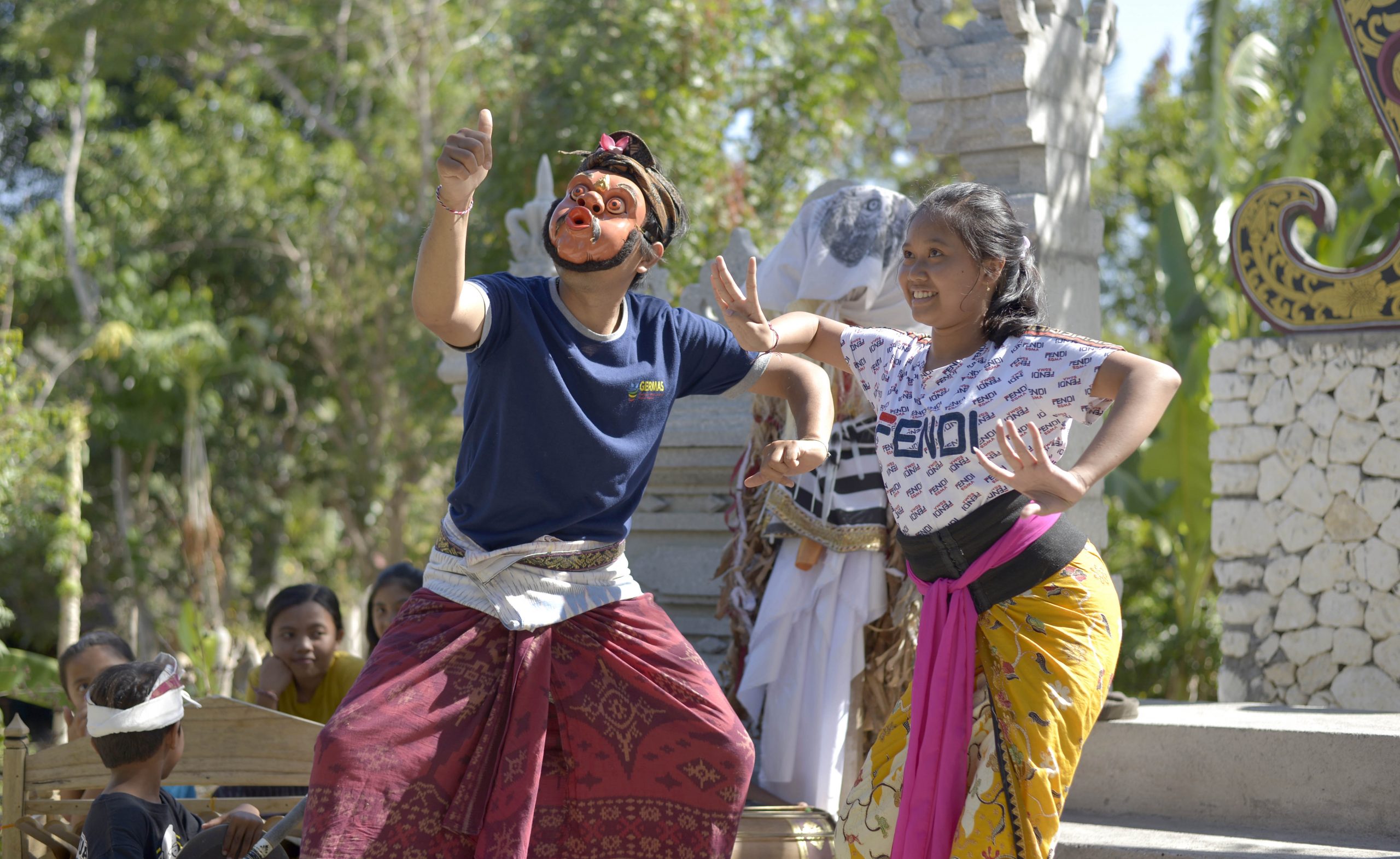
Apart from Rangda dance, Gandrung dance, Rejang dance and others are also taught. (Photo: I Wayan Karta)
“Bli Komang, practicing Rangda dance requires quite a lot of emotional emotion, right?” I asked.
“Yes… the emotional emotion is strong, because with this soul the Rangda mask that is danced will be more metaksu,” he said.
The Rangda dance is a typical Balinese dance which is usually synonymous with the barong. This dance does have a tough character and the mask looks scary.
This dance is usually performed during prospectivearang performances. The mask with long fangs, protruding tongue, and wide eyes terrifies those who see it.
Plus the black, white and red clothing accessories, as well as the nail covers on the dancer’s hands, give a scary impression.
However, this dance is still taught to maintain the ancestral heritage that once existed. Incidentally, at Umah Melajah there are Rangda masks which are used for learning by children. One of them is Agus who diligently studies Rangda masks.
“I learned this dance because I like it, there is a mystical element that I see in this dance, I like being taught by Bli Komang patiently,” said Agus.
The Rangda dance is indeed associated with a mystical atmosphere. Like the prospective charcoal which usually causes confusion or possession.
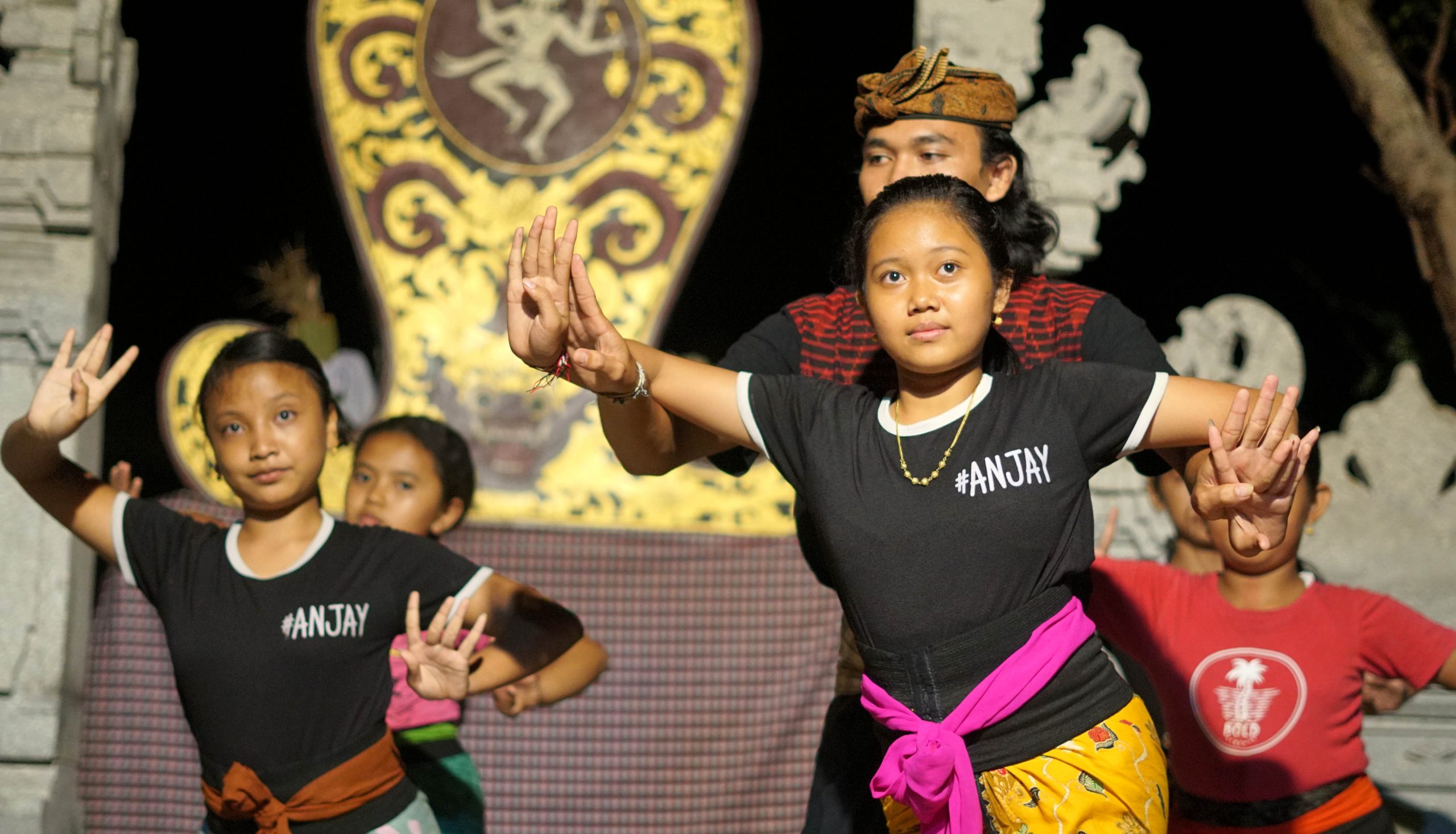
Bli Komang is teaching. (Photo: I Wayan Karta)
“When I learned the Rangda Dance with Bli Komang, I felt normal, but after wearing the Rangda mask, I felt something different,” said Agus.
Learning Rangda Dance at Umah Melajah is one of the arts and culture preservation activities. Gandrung Dance, Rejang Dance, and other performance dances are also taught. Children join Umah Melajah to learn many things, not just learning to dance.
Umah Melajah was built in the Bukit Keker area, Ped Village, Nusa Penida. This place is a showcase for preserving art and culture, as well as environmental management, especially regarding waste issues.
“It is said to be a showcase, because here there are various activities regarding art and culture preservation, agriculture and animal husbandry, renewable energy and also waste management,” said Bli Komang.
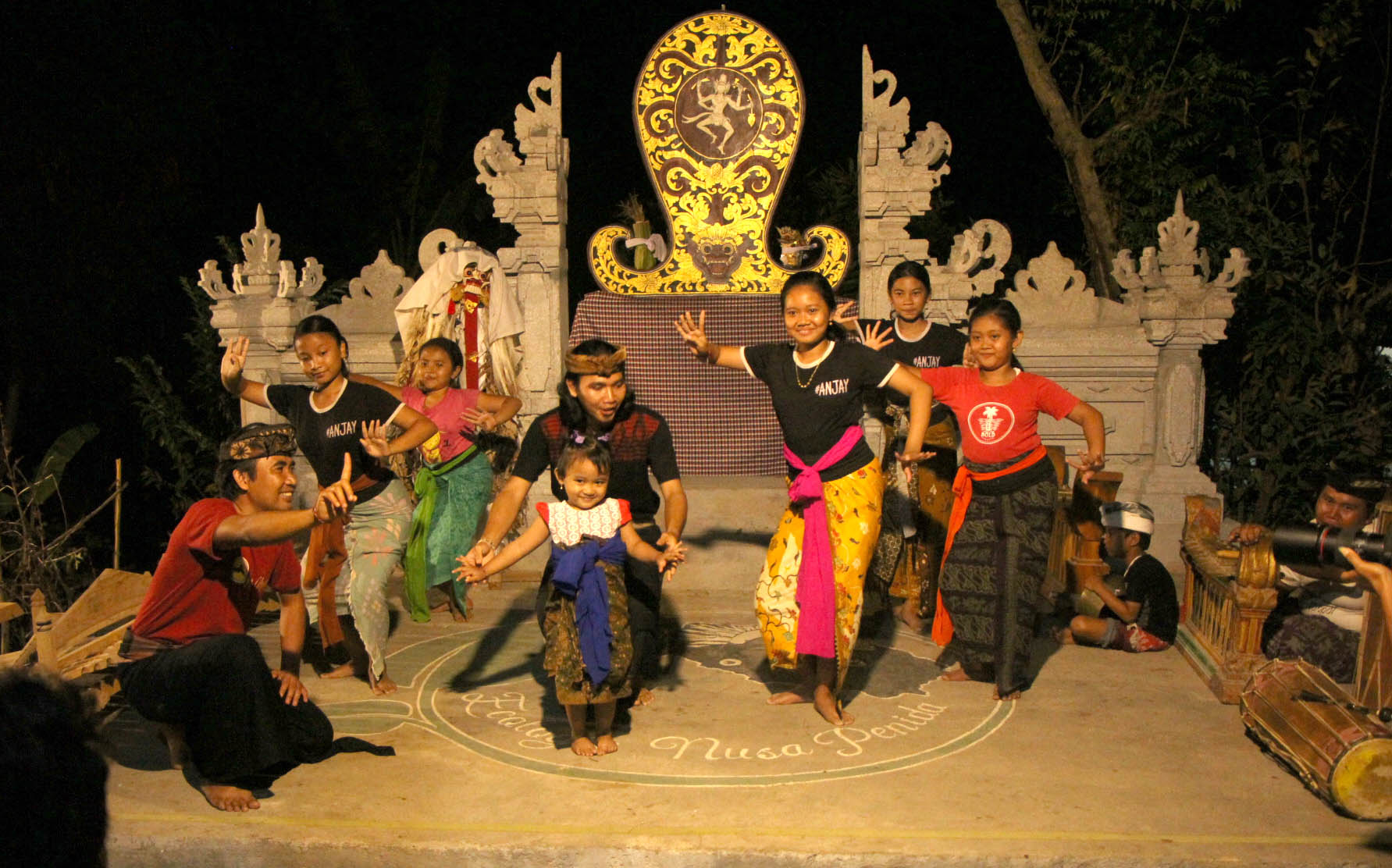 Toes spread and legs crossed. (Photo: I Wayan Karta)
Toes spread and legs crossed. (Photo: I Wayan Karta)
Indeed, when you enter Umah Melajah at the front there is a plantation designed like a farm. There are pillars with bamboo roofs. Each pole is wrapped around a passion fruit plant. Rising passion fruit plants up to the bamboo roof gives a green impression.
Passion fruit plants are planted in rows. Each plant has a different planting time. The aim is that if one plant is old and dies, it will be replaced by a new passion fruit plant. Every morning and evening a gardener waters the plants.
Here you can also see the water storage system in newly planted fruit plants. The method is to use used plastic bottles as water containers.
“In Nusa Penida, when farming, the problem is water during the dry season, so you have to save water,” said I Wayan Belun.
In Umah Melajah he is often called Iwak De. He takes care of the plants every day and also uses the results of the planting. Every three days Iwak De fertilizes with liquid fertilizer from his livestock’s biogas.
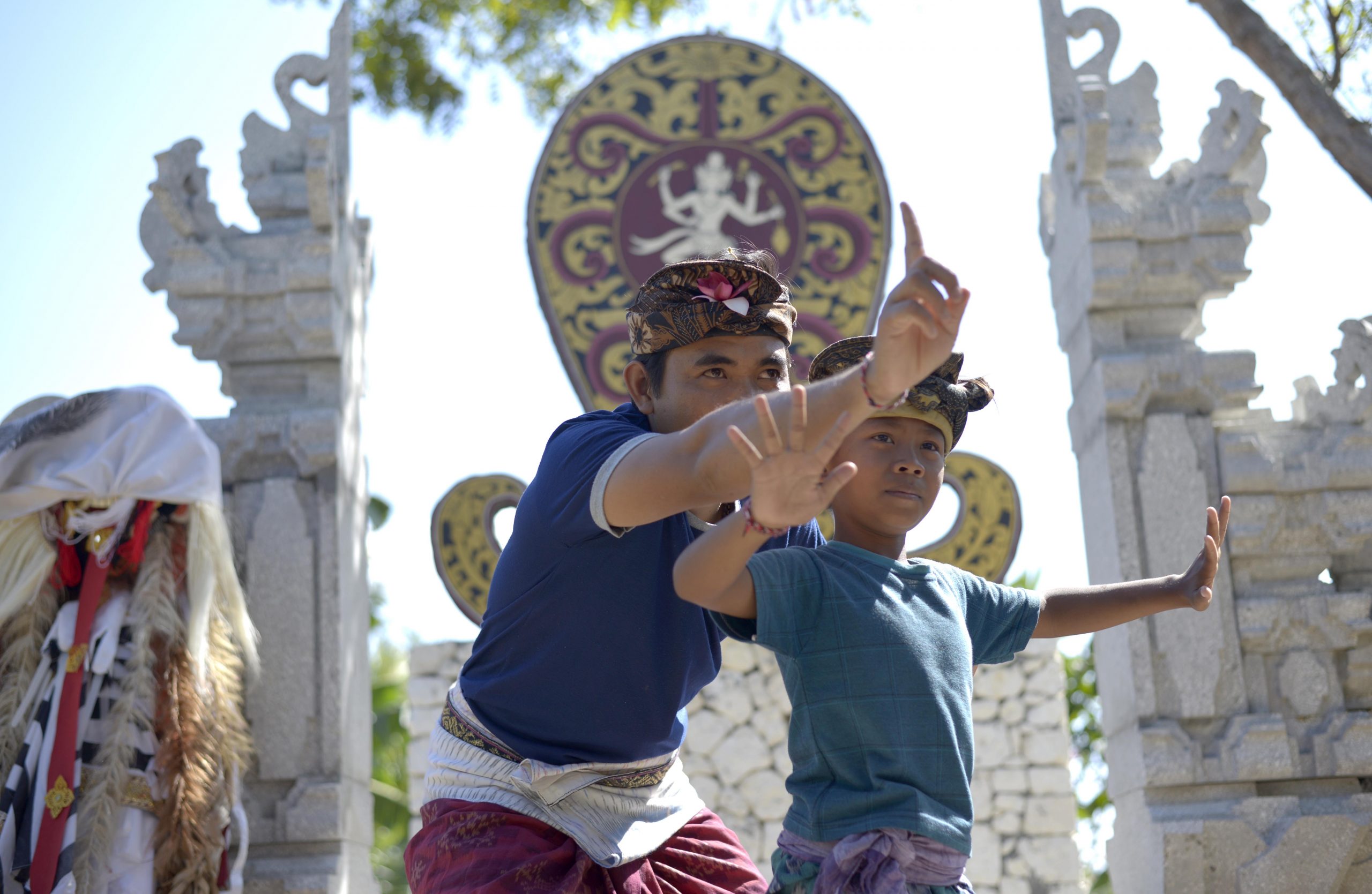 Apart from explaining the stages, he also explains the meaning of each movement. (Photo: I Wayan Karta)
Apart from explaining the stages, he also explains the meaning of each movement. (Photo: I Wayan Karta)
Even though he is 60 years old, he is still passionate about gardening. The water spray from the hose makes the plants fresher. Iwak De feels happy when his garden grows well.
“I would be even happier if the children helped water, fertilize and plant the plants. “And we are even happier when we can share the harvest with them,” said Iwak De.
His gray hair is also an identity for his experience in gardening.
Iwak De said, he had to manage his time so that he could still carry out his work as a porter. Porter labor, animal husbandry and farming are his daily activities. Even though he is old, he is still enthusiastic about working. Especially when gardening accompanied by children.
Children who are members of Umah Melajah are taught how to garden. Apart from learning cultural arts, they also learn how to care for plants. There are vegetables, fruit, medicinal plants and upakara plants that are cared for with the children. At least every Saturday and Sunday they can make Iwak De’s job easier.
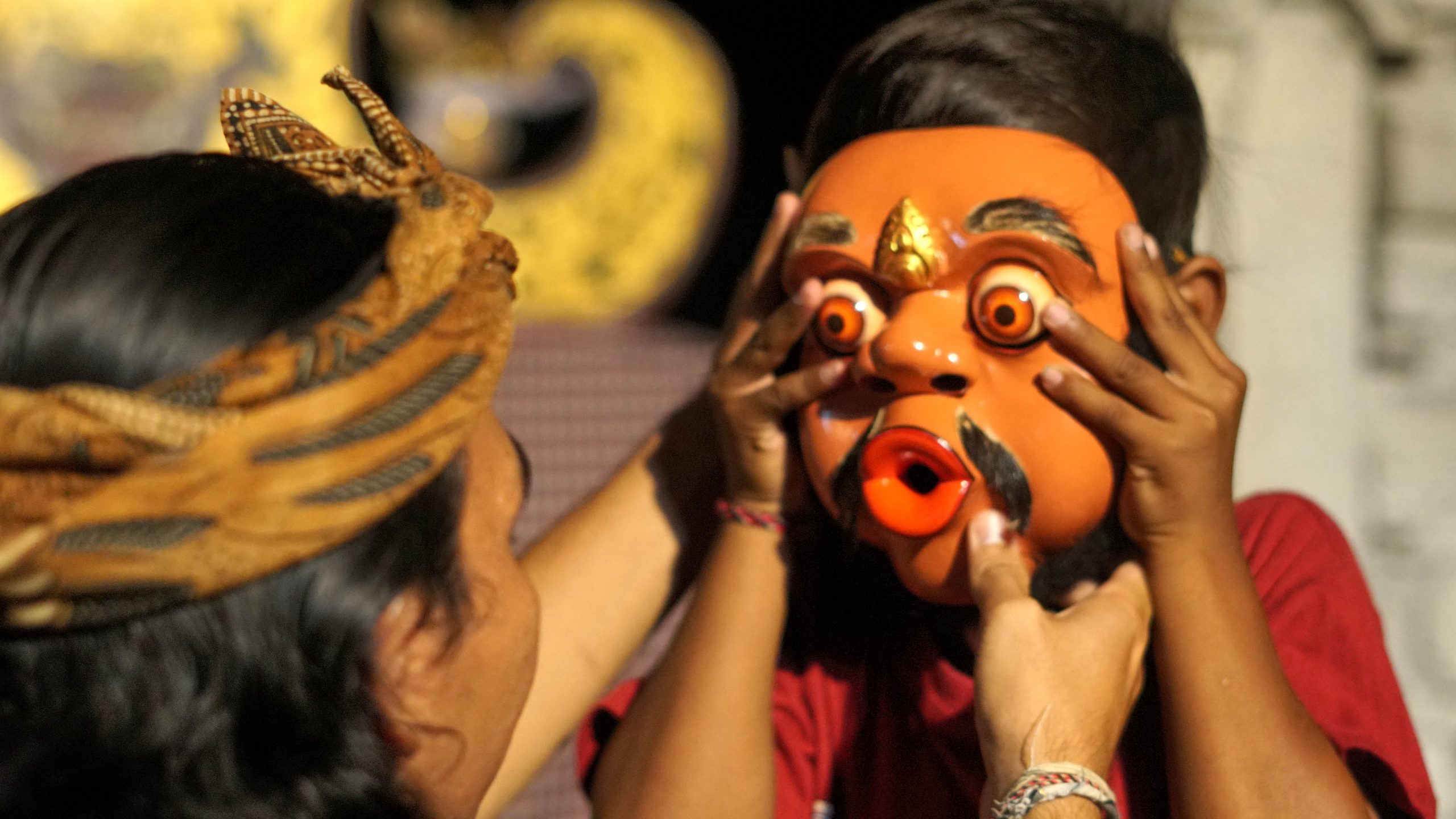 Practicing the Rangda dance requires a fair amount of mental emotion. (Photo: I Wayan Karta)
Practicing the Rangda dance requires a fair amount of mental emotion. (Photo: I Wayan Karta)
WASTE MANAGEMENT PLACE
Twenty meters from the entrance to Umah Melajah, to the south, there is the Nyuh Kedas TPST (Integrated Waste Management Site). Maybe when we hear about waste management in our minds the image of a place that is dirty, shabby, full of flies and smells comes to mind. Uniquely, this TPST is not like that.
Under the guidance of PPLH Bali, this TPST looks different from the others. When we entered, on the left and right there were terraced gardens. Steps according to the existing land type. We can see kale, chilies, cucumbers, eggplant, beans and mustard greens growing well. The green makes us feel at home at the TPST.
There is no rubbish scattered at this TPST. Bad smell? Also nothing. We can see piles of plastic in neatly arranged sacks. Organic waste ferments in its container.
“We really want to make the impression that this TPST is different, a green, odorless and clean waste management place, people will be comfortable coming here,” said Catur Yudha Hariani, a female environmental activist who is also the Director of PPLH Bali.
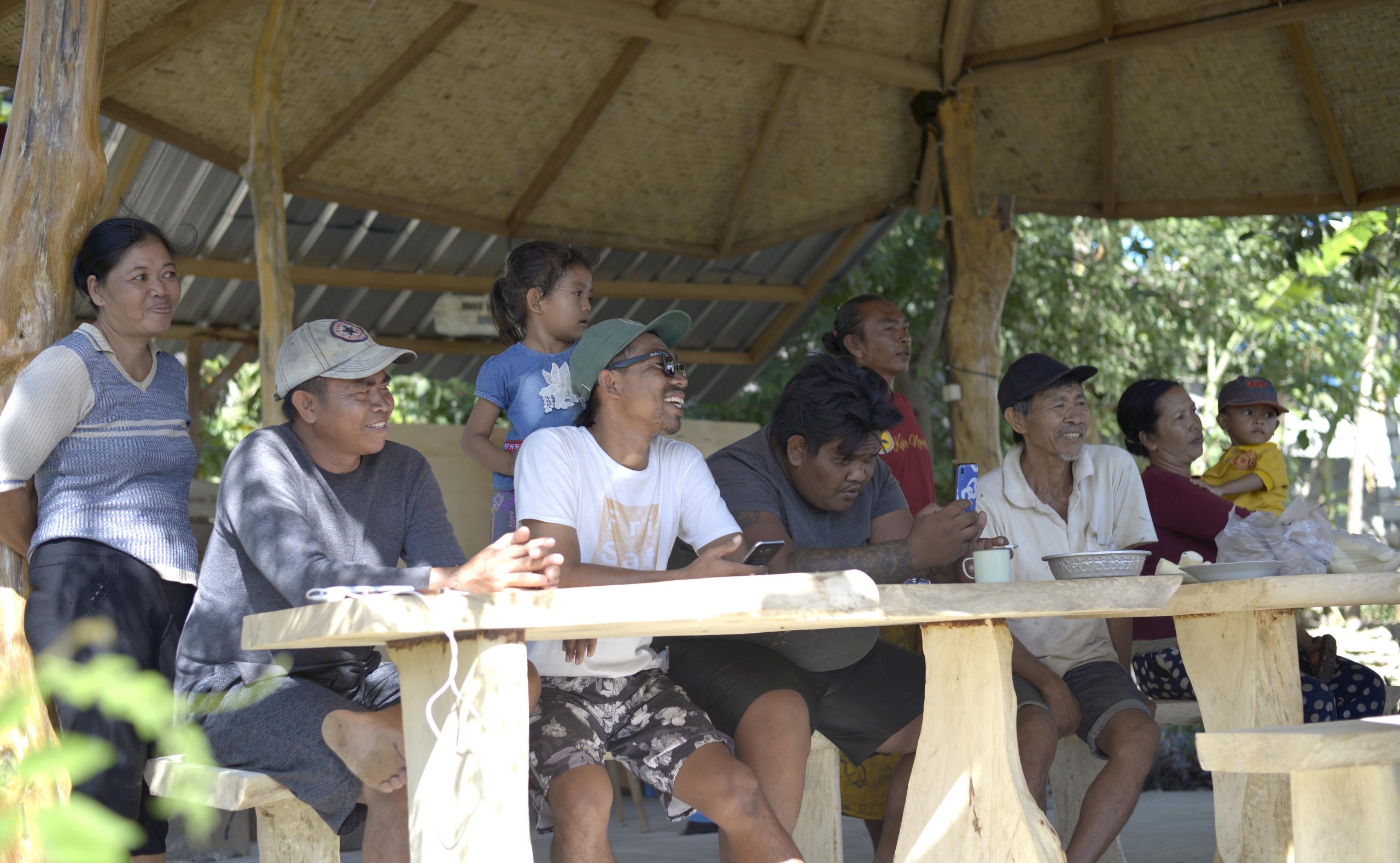 The crowds at Umah Melajah are visible every Saturday and Sunday. (Photo: I Wayan Karta)
The crowds at Umah Melajah are visible every Saturday and Sunday. (Photo: I Wayan Karta)
He said that waste was a common concern. Collaboration between the community, Service Villages, Traditional Villages and youth is really needed to realize “zero waste”.
It is also hoped that the Nyuh Kedas TPST in the Umah Melajah area can become a model and learning place for waste management.
On the walls of the TPST building you can see educational posters. What is most interesting is the motto written on the poster board: “Nyuh Kukuh Go Zero Waste, Sing Ada Luu, Bek Tam Bek Pis”.
“Sing Ada Luu” means no waste. “Bek Tamu Bek Pis” means lots of tourists, lots of money. This motto provides a deep meaning about waste, tourism and the economy.
Nyuh Kedas TPST has just received 70 family customers. In terms of numbers, there aren’t many. However, the system implemented as a TPST customer is somewhat different.
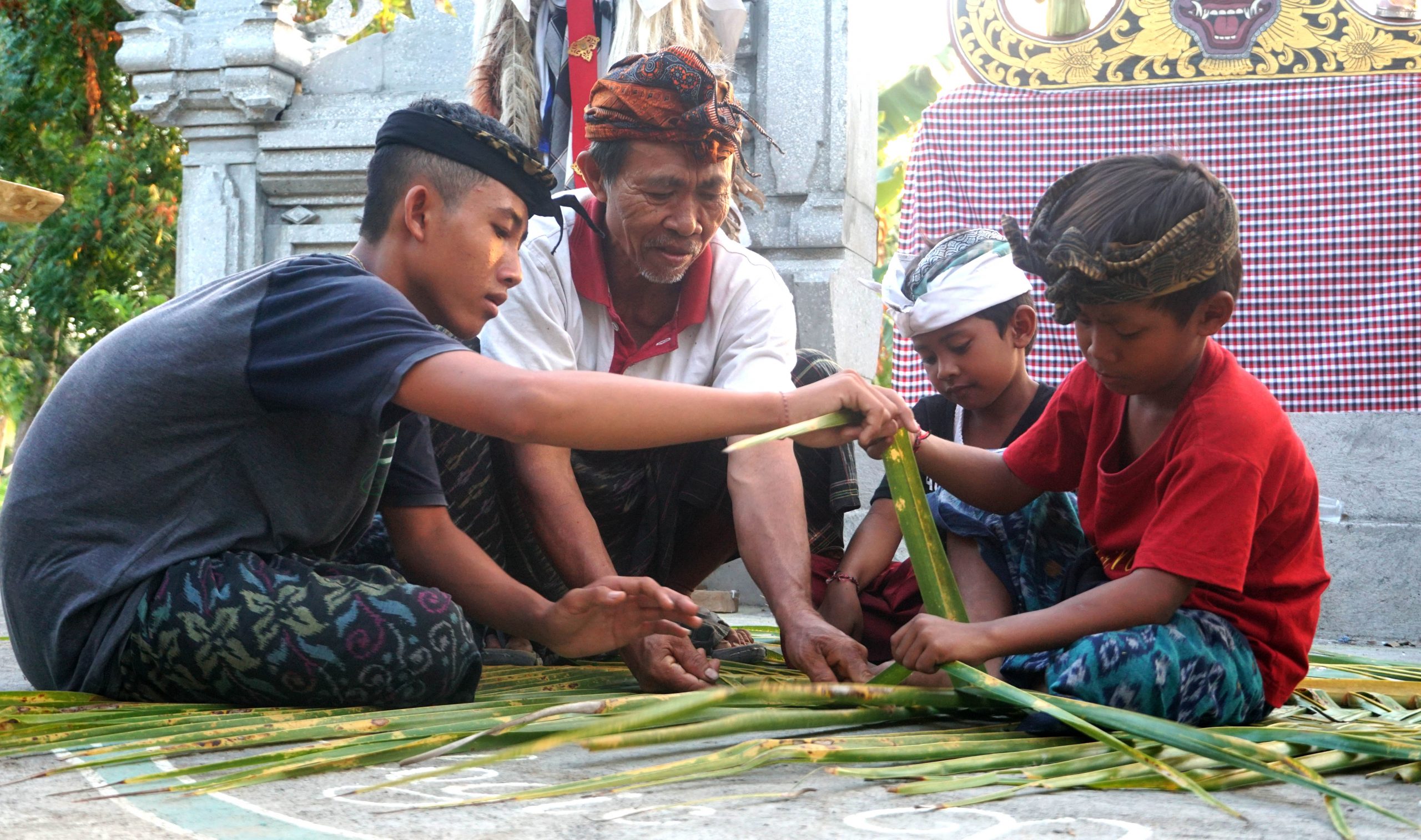 Arts, social culture, agriculture, animal husbandry, renewable energy, waste management and tourist attractions come together in one place. (Photo: I Wayan Karta)
Arts, social culture, agriculture, animal husbandry, renewable energy, waste management and tourist attractions come together in one place. (Photo: I Wayan Karta)
“Those who can become customers if they want to do the sorting at home. Sorting organic, inorganic and residual waste. “Apart from residents, our customers also include villas, food stalls, homestays and schools,” said I Nyoman Moda.
I Nyoman Moda, known as Pak Anok, is in charge of transporting sorted waste from customers. Every customer location has a waste sorting station attached. White painted wood containing organic, inorganic and residue waste written on it.
Each sorting section is provided with a sack. This makes it easier for customers to put in their trash. Garbage is picked up every morning and evening. The waste that is sorted into sacks for each customer is put into moci vehicles.
Upon arrival at the TPST, Mr Anok immediately placed the waste sorting according to the space provided. Organic waste is chopped and fermented. Plastic bottles filled with water were thrown away. Residual waste is taken to the landfill.
This direct management is the reason why TPST does not smell bad. “Waste sorting is indeed the main obstacle, I keep reminding customers to always sort it,” said Mr Anok.
Inside Umah Melajah there is a stage, round house and outlet house. The performance stage with the backdrop of Shiva Nata Raja as a symbol of art gives a beautiful and “taksu” impression. The movements of the little dancers on stage accompanied by a dance instructor create a cool atmosphere.
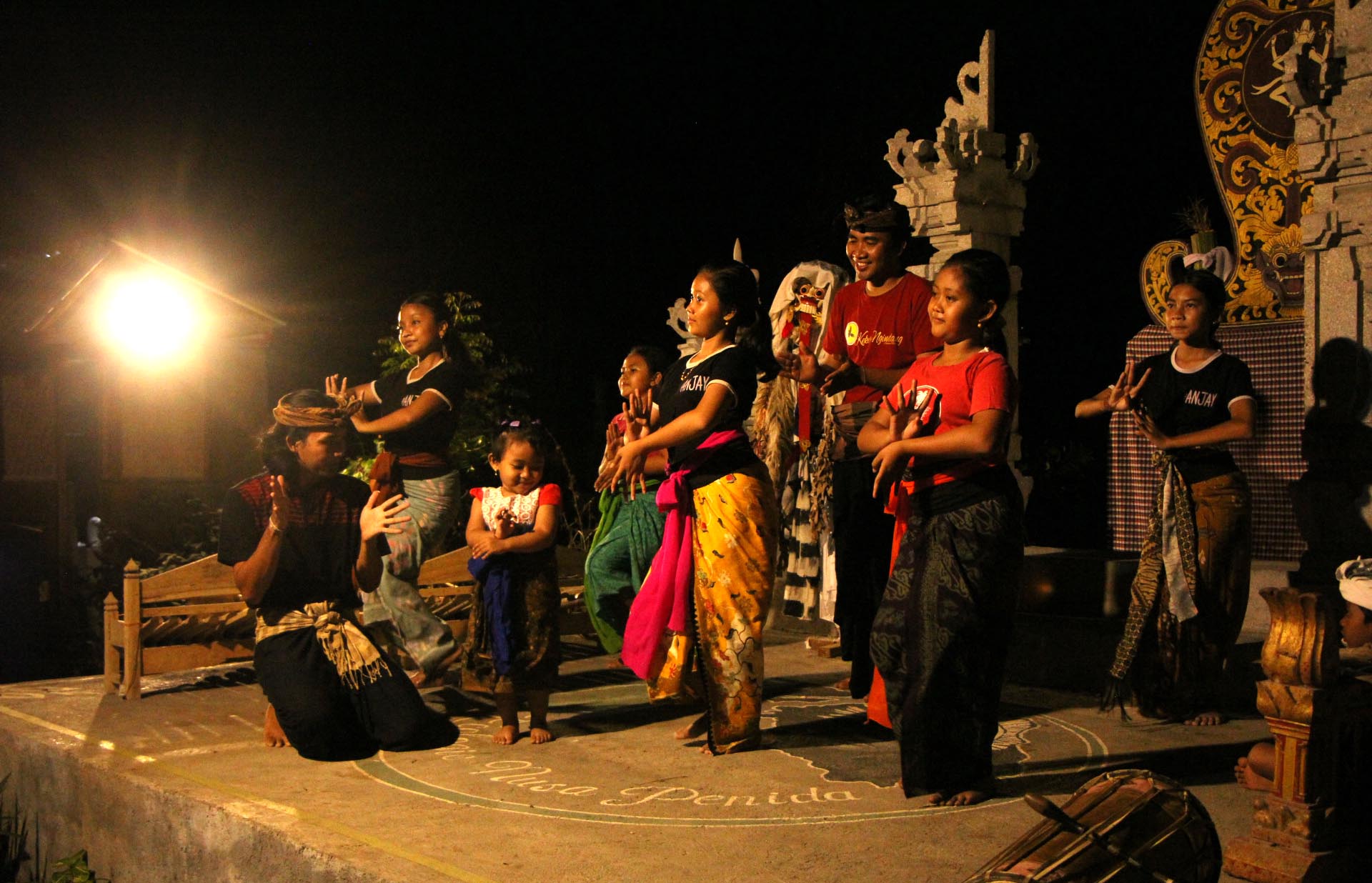 Umah Melajah or home of learning for the next generation. (Photo: I Wayan Karta)
Umah Melajah or home of learning for the next generation. (Photo: I Wayan Karta)
To the left and right of the stage, children can be seen learning gamelan. Even with minimal gamelan equipment, the gamelan sounds provide entertainment. Children were also seen learning tupakara such as making penjor sampian in the round house. On the north side there is an outlet house where typical Nusa Penida products are displayed. Inside you can see unique and typical Cepuk cloths displayed on the walls. There are also VCO products created by the women’s farming group Taksu Tridatu.
To the south of the stage is a cowshed. The cage looks ordinary, but there is biogas. The biogas system is connected to the cattle pen. Cow dung flows into a holding tank. As a result, the kitchen at Umah Melajah uses biogas as fuel. This biogas is also used as fuel for Petromax lamps, when solar panel lamps lack power.
The lighting at Umah Melajah fully utilizes solar panels. These panels continuously provide light, thus becoming a pilot form of renewable energy.
The crowds at Umah Melajah are visible every Saturday and Sunday. This place presents a form of art, culture and ecological preservation of Nusa Penida. Arts, social culture, agriculture, animal husbandry, renewable energy, waste management and tourist attractions come together in one place. Children will really enjoy having lots of choices in activities.
We hope that Umah Melajah continues to develop, and can become a model for umah melajah in every archipelago. Yes, Umah Melajah or a learning house for the next generation and elders in the activities of inheriting arts and culture and local wisdom in environmental management. (I Wayan Karta)
(This feature article is the result of the Citizen Journalism Training held by The Samdhana Institute with youth participants from indigenous communities throughout Indonesia with trainer Syofiardi Bachyul Jb online on 31 August – 21 September 2020. I Wayan Karta is an activist at the Taksu Tridatu Foundation on Nusa Penida Island, Bali and also a lecturer).

